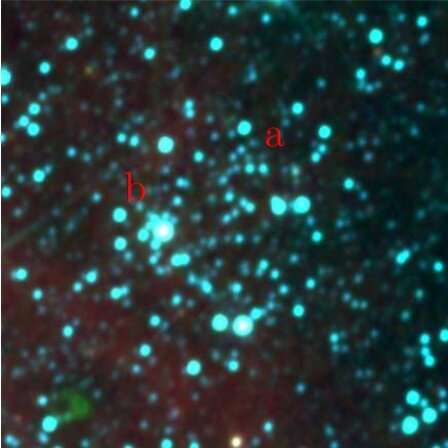October 7, 2021 report
NGC 1605 is an old binary open cluster, study finds

By analyzing the data from 2MASS and Gaia-EDR3 surveys, as well as images from NASA's WISE spacecraft, a Brazilian astronomer has inspected a galactic open cluster (OC) known as NGC 1605. The study, presented in a paper published September 29 on arXiv.org, reveals that NGC 1605 is not a single open cluster as was previously thought but a pair of OCs.
Open clusters (OCs), formed from the same giant molecular cloud, are groups of stars loosely gravitationally bound to each other. So far, more than 1,000 of them have been discovered in the Milky Way, and scientists are still looking for more, hoping to find a variety of these stellar groupings. Expanding the list of known galactic open clusters and studying them in detail could be crucial for improving our understanding of the formation and evolution of our galaxy.
NGC 1605 was discovered in 1786 by William Herschel. The cluster is located some 8,300 light years away in the Perseus constellation. Now, a new study conducted by Denilso Camargo of the Military College of Porto Alegre in Brazil, provides evidence that NGC 1605 is composed of two open clusters.
"In the following, it is shown that open cluster NGC 1605 is in fact two merging OCs (hereafter, NGC 1605a and NGC 1605b) with evidence of tidal streams," Camargo wrote in the paper.
The decontaminated color magnitude diagrams (CMDs) of the cluster projected region show two distinct stellar populations suggesting that NGC 1605 is a composite of two clusters. It was noted that the two stellar populations are mixed within a large area around the binary cluster including the central region of each one, which suggests an ongoing merger event.
The astronomer added that the two merging clusters NGC 1605a and NGC 1605b are followed by tidal streams that appear to draw their recent orbital path. These tidal streams appear to be populated by several stellar overdensities.
According to the paper, NGC 1605a and NGC 1605b are 2 billion and 600 million years old, respectively. They are both located at the same distance from the Earth (about 8,300 light years) with a projected separation of only approximately 5.9 light years between their central cores. Camargo explained that these parameters suggest a physical connection and the age difference point to a formation by tidal capture during a close encounter.
In concluding remarks, the author of the research noted that NGC 1605 is the first old binary OC known in the Milky Way galaxy, adding how important this object could be for further studies regarding open cluster pairs.
"The newly found binary cluster may be a key object on the observational validation of theoretical studies on binary cluster pairs formation by tidal capture as well as in the formation of massive clusters by merging, and tidal disruption of stellar systems," Camargo concluded.
More information: Denilso Camargo, NGC1605a and b: an old binary open cluster in the Galaxy. arXiv:2109.14664v1 [astro-ph.GA], arxiv.org/abs/2109.14664
© 2021 Science X Network





















